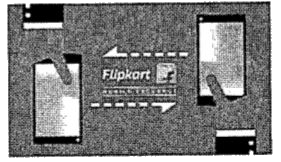Which of the following processess best describes the purification of muddy water by addition of alum?
Adsorption
Coagulation
Dialysis
Electrodialysis
The correct Answer is:B
To solve the question regarding the purification of muddy water by the addition of alum, we can break down the process into clear steps:
1. Understanding the Composition of Muddy Water:
- Muddy water contains colloidal particles that are suspended in water. These particles are typically negatively charged, which prevents them from settling due to electrostatic repulsion.
2. Role of Alum in Purification:
- Alum (potassium aluminum sulfate) is a coagulant that, when added to muddy water, dissociates into ions. These ions neutralize the negative charges on the colloidal particles.
3. Coagulation Process:
- As the negative charges on the colloidal particles are neutralized, the particles lose their repulsive forces. This leads to the aggregation of the particles, allowing them to clump together.
4. Settling of Aggregated Particles:
- Once the colloidal particles aggregate, they become heavier and can settle down at the bottom of the container due to gravity. This process is known as sedimentation.
5. Resulting Purification:
- After the coagulation and sedimentation processes, the clear water above the settled particles can be decanted, resulting in purified water.
6. Conclusion:
- The process that best describes the purification of muddy water by the addition of alum is called coagulation or precipitation.
Final Answer:
The purification of muddy water by the addition of alum is best described by the process of coagulation.
---
- Muddy water contains colloidal particles that are suspended in water. These particles are typically negatively charged, which prevents them from settling due to electrostatic repulsion.
- Alum (potassium aluminum sulfate) is a coagulant that, when added to muddy water, dissociates into ions. These ions neutralize the negative charges on the colloidal particles.
- As the negative charges on the colloidal particles are neutralized, the particles lose their repulsive forces. This leads to the aggregation of the particles, allowing them to clump together.
- Once the colloidal particles aggregate, they become heavier and can settle down at the bottom of the container due to gravity. This process is known as sedimentation.
- After the coagulation and sedimentation processes, the clear water above the settled particles can be decanted, resulting in purified water.
- The process that best describes the purification of muddy water by the addition of alum is called coagulation or precipitation.
The purification of muddy water by the addition of alum is best described by the process of coagulation.
Topper's Solved these Questions
- SURFACE CHEMISTRY BOOK - AAKASH INSTITUTE ENGLISHCHAPTER - SURFACE CHEMISTRY EXERCISE - Assignment Section - B (Previous year questions)
14 Videos
- SURFACE CHEMISTRY BOOK - AAKASH INSTITUTE ENGLISHCHAPTER - SURFACE CHEMISTRY EXERCISE - Assignment Section - B (Questions asked prior to medical Ent . Exams . 2005)
10 Videos
- SURFACE CHEMISTRY BOOK - AAKASH INSTITUTE ENGLISHCHAPTER - SURFACE CHEMISTRY EXERCISE - Exercise
20 Videos
- STRUCTURE OF ATOM BOOK - AAKASH INSTITUTE ENGLISHCHAPTER - STRUCTURE OF ATOM EXERCISE - ASSIGNMENT ( SECTION -J) Aakash Challengers Questions
12 Videos
- TEST 1BOOK - AAKASH INSTITUTE ENGLISHCHAPTER - TEST 1EXERCISE - EXAMPLE
134 Videos
Similar Questions
Knowledge Check
Which of the following best describes the picture:
 ABonus offerBExchange offerCPrice-off offerDPrize contest
ABonus offerBExchange offerCPrice-off offerDPrize contestWhich of the following best describes the picture:
 ASales promotionBPersonal SellingCPublicityDAll of the above
ASales promotionBPersonal SellingCPublicityDAll of the aboveWhich of the following plants is used for the purification of water ?
ABeggiationBChlorellaCSpirogyraDEichhornia
Which of the following best describes the electrical state of a neuron at rest?
View SolutionWhich of the following is the best imbibant ?
View SolutionWhich of the following does not form alums?
View SolutionWhich of the following sequences of events best describes inspiration?
View SolutionWhich of the following is used as a method purification for silicon ?
View Solution
